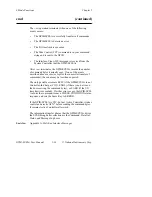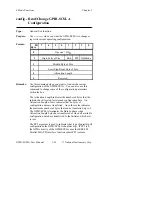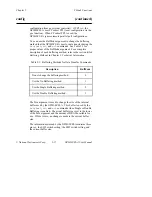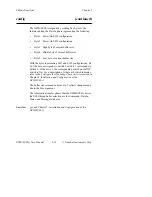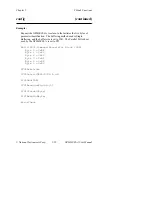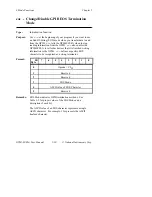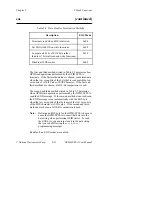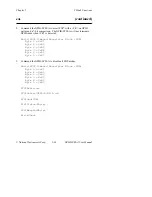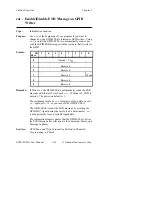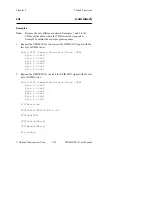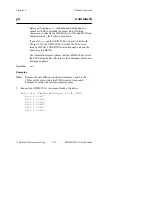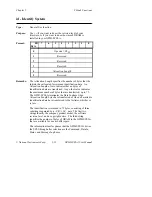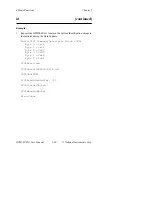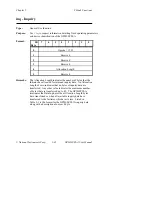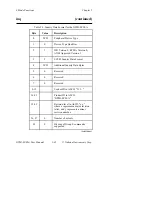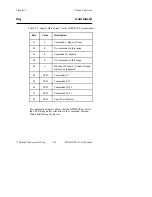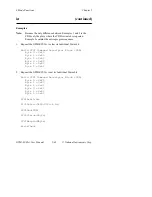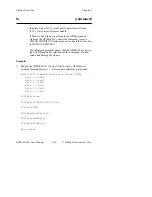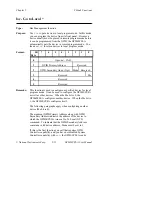
S Mode Functions
Chapter 5
GPIB-SCSI-A User Manual
5-36
© National Instruments Corp.
gts - Go from Active Controller to Standby
Type:
Specialized Controller function
Purpose:
Use
gts
to change the GPIB-SCSI-A from Active Controller
to Standby Controller or if the I/O and bus management
functions do not meet the needs of your device. For example,
use
gts
if you want to allow two external devices to talk to
each other directly. The GPIB-SCSI-A can selectively
participate in the handshake of the data transfer and hold off
the handshake when it detects the END message. The
GPIB-SCSI-A can then take control synchronously without
possibly corrupting the transfer.
Format:
Bit
7
6
5
4
3
2
1
0
Byte
0
Opcode = C7H
1
Reserved
2
Reserved
3
Reserved
Mode
4
Reserved
5
Reserved
Remarks:
If Mode is 1, shadow handshaking is enabled. If Mode is 0,
shadow handshaking is not performed.
gts
causes the GPIB-SCSI-A to go to the Controller Standby
state and to unassert the ATN* signal if it is initially the
Active Controller.
gts
permits GPIB devices to transfer data
without the GPIB-SCSI-A participating in the transfer.
If you enable shadow handshaking, the GPIB-SCSI-A
participates in the data handshake as an Acceptor without
actually reading the data. It monitors the transfers for the
END (EOI* or EOS character) message and holds off
subsequent transfers. By using this mechanism, the
GPIB-SCSI-A can take control synchronously on a subsequent
operation such as
cmd
or
rpp
.



